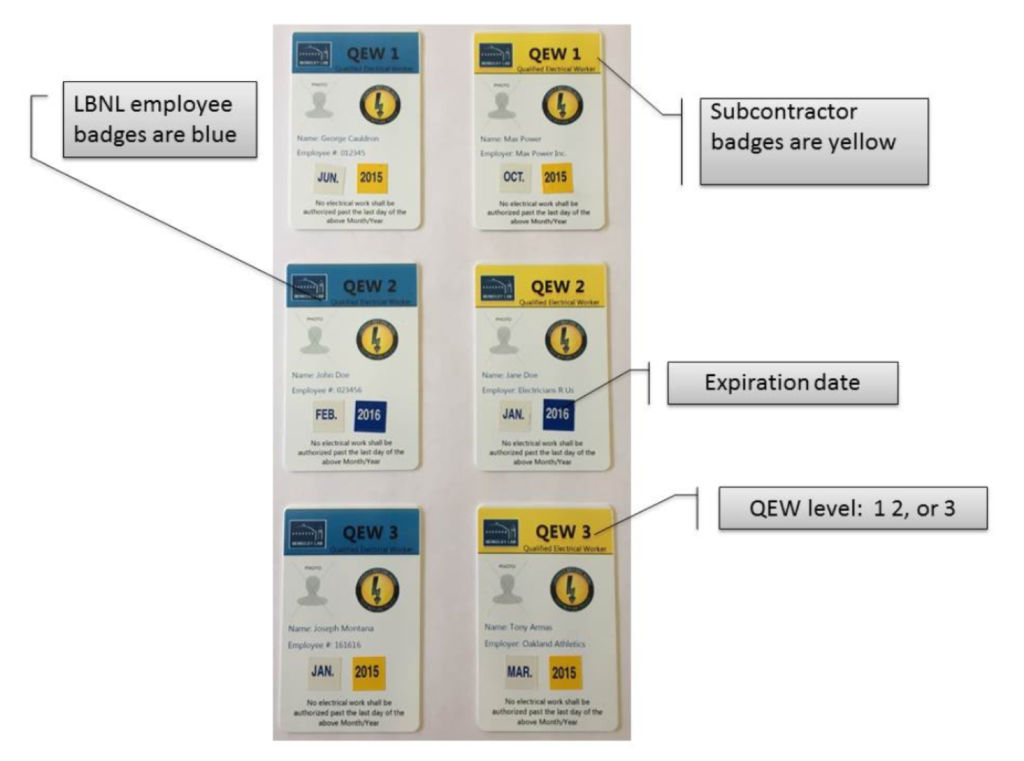Basic Definition of a Qualified Electrical Worker (QEW)
Electrical Safety regulations require that only a Qualified Person perform electrical work on exposed hazardous circuit parts.
Click on the links to see more explanation on what is considered “electrical work”, what is considered “hazardous”, and what is considered “exposed”.
The definition of a Qualified Person is:
One who has demonstrated skills and knowledge related to the construction and operation of the electrical equipment and installations and has received safety training to identify the hazards and reduce the associated risk.
— NFPA 70E 2018
At Berkeley Lab, we call this a Qualified Electrical Worker (QEW), and add the requirement for approval by the Electrical AHJ for Safe Work Practices.
QEW Levels
There are a few flavors of QEW, as shown in the table below. Both QEW 1 and QEW 2 are required to keep a QEW Badge, with date stickers that show when their training expires.
| QEW Level | Restrictions | Examples | Badge |
| QEW R | R&D type hazards only, no line AC exposure | Vacuum chamber high voltage | No |
| QEW 1 | 50 – 300 VAC, provided there is no arc flash hazard | 120 VAC cord and plug or hard-wired equipment | Yes |
| QEW 2 | 50 – 750 VAC, with or without arc flash hazard | 480 VAC systems | Yes |
| QEW 3 | >750 VAC Utility 60 Hz | Lab medium voltage distribution at 12 kV | Future |
QEW Badges

Restrictions
In addition to these QEW levels, all QEWs are restricted, by definition, to only work on equipment for which they have the requisite skills and knowledge. QEW 1, 2 and 3 will have standard restrictions listed on the back of their QEW badge. QEW R are restricted only to equipment listed in the specific WPC Activity that authorizes their work.
Possession of a QEW badge does not authorize any electrical work. All work is authorized by line management.